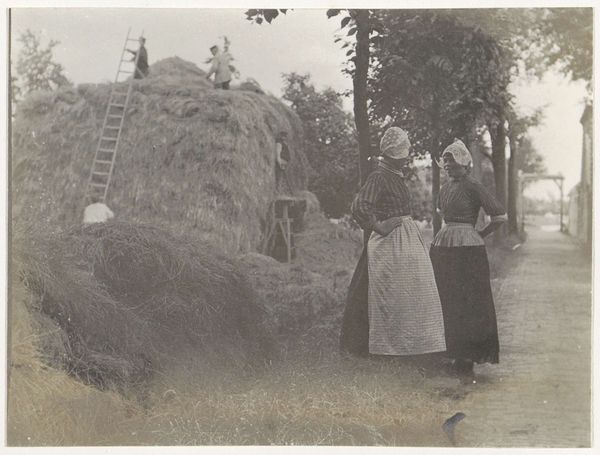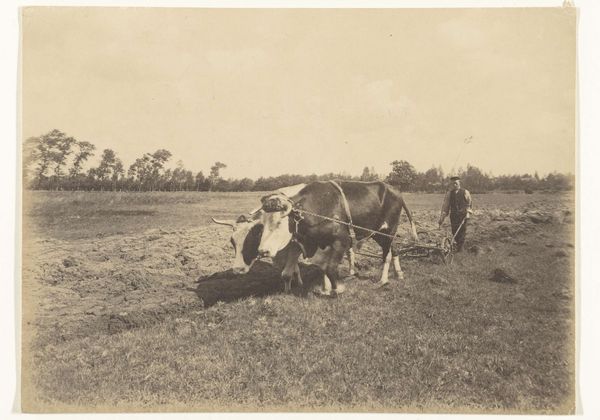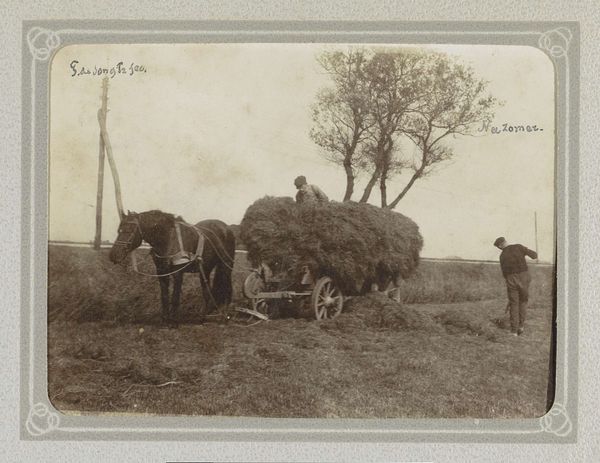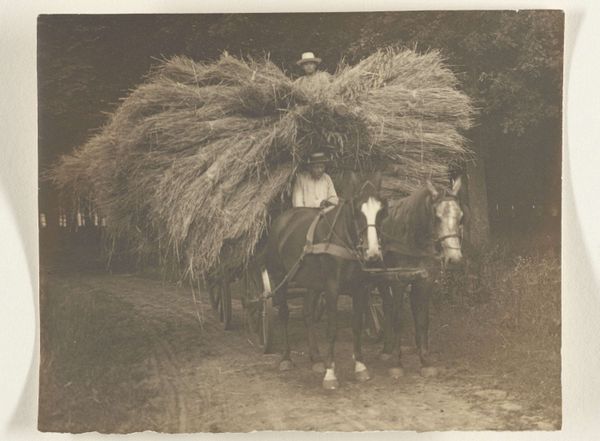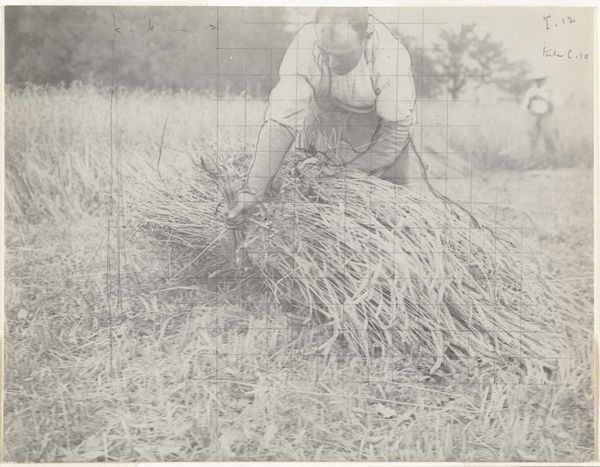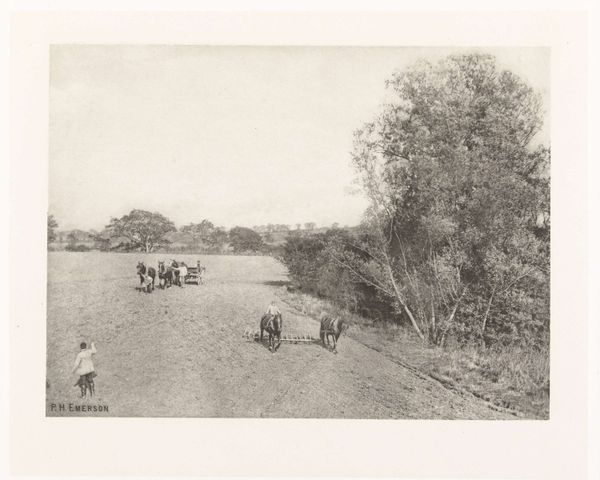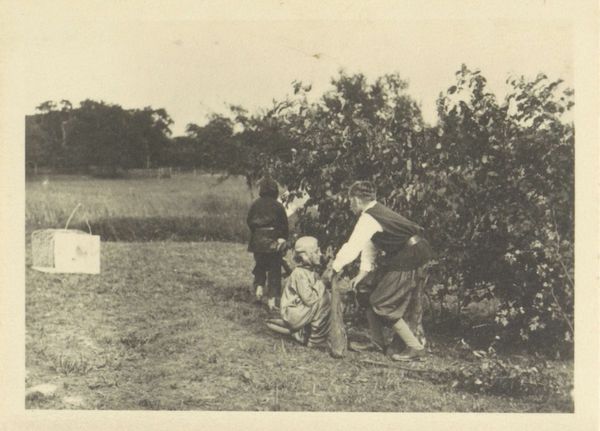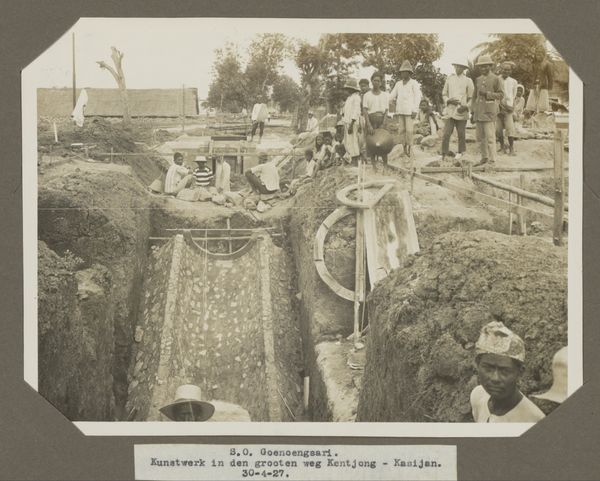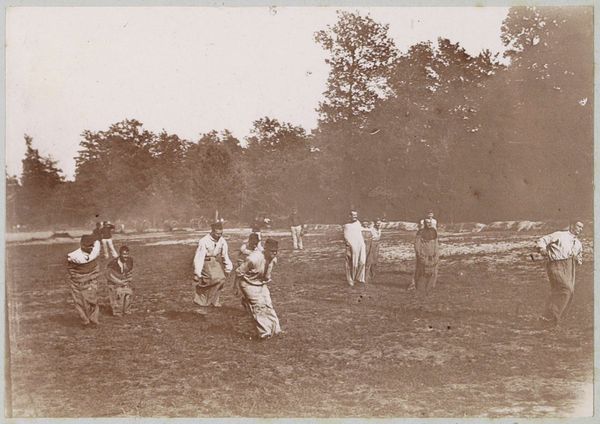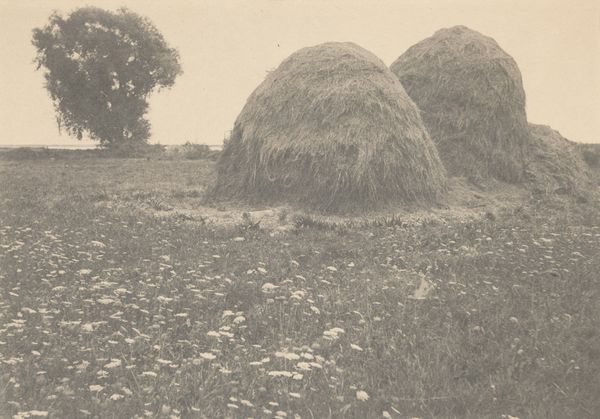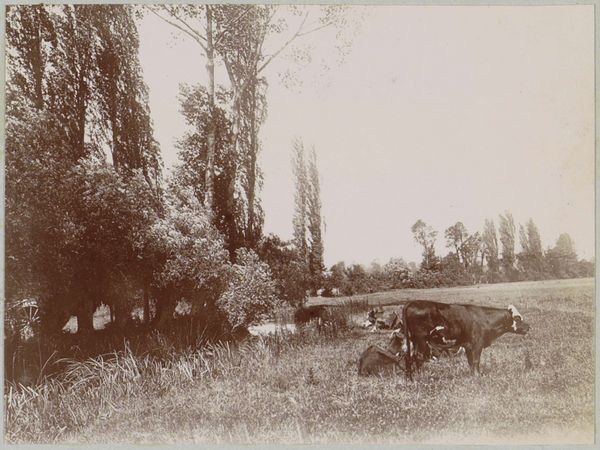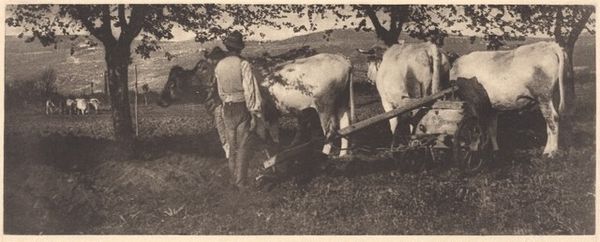
photography, gelatin-silver-print
#
landscape
#
archive photography
#
photography
#
historical photography
#
gelatin-silver-print
#
genre-painting
#
realism
Dimensions: height 175 mm, width 231 mm
Copyright: Rijks Museum: Open Domain
Curator: Let's delve into this gelatin-silver print titled "Hooiende leerlingen van Schule Schloss Salem," taken around 1929. We see students harvesting hay. Editor: My first impression? A yearning. This scene, captured in monochrome, speaks to the quiet rhythm of labor. It's incredibly serene, yet slightly melancholic—like a memory fading at the edges. Curator: It is precisely this melancholic undertone that fascinates me. Taken at Schule Schloss Salem, a boarding school in Germany with ties to progressive education and founded in the aftermath of WWI, the photograph can be understood within the social context of the period, questioning the ideals of labor and social reform. Editor: Progressive ideals… or a pastoral fantasy? The image feels curated, like a performance. See how their postures, almost artful, especially those shirtless boys hauling? It reminds me of idealized socialist realist painting, only rendered in the cool remove of a photograph. Curator: The lack of explicit emotion contributes to a more nuanced reading, allowing the photograph to function as both a document of and a commentary on the educational philosophy of the time, in a society that sought to reconcile social progress with traditional structures. Gender and class roles are being silently negotiated. The presence of onlookers even seems to reinforce such ideas. Editor: It's precisely this tension—the real versus the constructed—that captivates me. Is it capturing genuine experience, or is it promoting an aesthetic? Look at the tones, this play of light… almost as if painting on the darkroom. It has a painterly quality that lends the whole scene a dreamlike quality. I am really fond of its textures and the whole setting under that misty afternoon light. Curator: Absolutely. The anonymous photographer seems less interested in stark documentation and more inclined to evoke a mood—a moment in time laden with the anxieties and aspirations of a changing society. It becomes less about these individuals, and more about the laboring body, and their relationship to the land, which are powerful themes explored from very different positions, but certainly by examining Romanticism. Editor: True! Perhaps the heart of its message is about embracing the physicality and the tangible amidst uncertainty and progress. After all, they're creating something very material here, stacked to the sky. Curator: Thank you for so poignantly expressing your interpretation. Your artistic eye captures layers of meaning. Editor: Well, thank you. Sometimes, feeling the dirt beneath your fingernails is the only thing that grounds you, isn’t it?
Comments
No comments
Be the first to comment and join the conversation on the ultimate creative platform.
